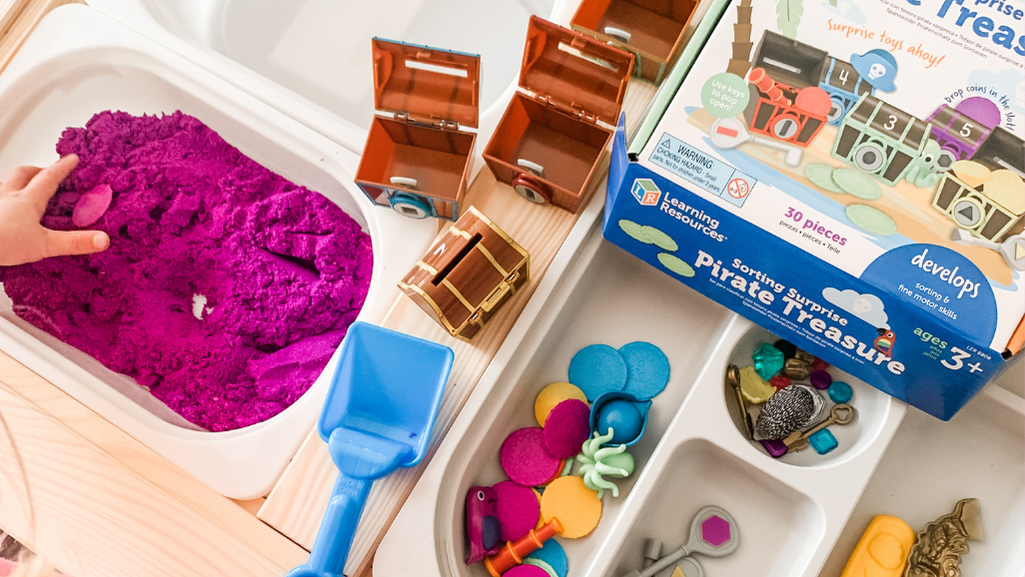
Using Sensory Bins & Tables in Speech Therapy
|
|
Time to read 2 min
On Vacation 😎 ~ all orders will ship Tuesday, April 22nd!
|
|
Time to read 2 min
Sensory tables in speech therapy filled with materials like rice, beans, sand, or water offer a tactile experience that can be paired with targeted vocabulary lessons. While playing in a sand-filled sensory bin, introduce new vocabulary related to textures (e.g., smooth, soft, grainy) or actions (e.g., scoop, pour, bury). Encourage students to describe what they feel and see, fostering both expressive and receptive language skills.
Use the sensory table/bin to create thematic storytelling opportunities. Include miniature objects related to a storybook or a specific theme (e.g., pets, ocean animals). As students manipulate and explore the objects, guide them in sequencing events or retelling stories using appropriate language structures (e.g., first, then, next, finally).
Create fun and interactive games that require students to follow multi-step directions or understand spatial concepts during your speech therapy sessions! Use other toys and hide objects in different positions within the sensory materials. Encourage students to find them using directional and positional cues (e.g., look under the blue treasure chest!). This activity not only targets language comprehension but also improves auditory processing skills in speech therapy!
Use the sensory table/bin as a platform for collaborative activities that promote social communication skills. Encourage students to take turns adding items to the bin, describing what they are doing, and asking questions or making comments about each other’s actions. This fosters conversational skills, joint attention, and the ability to initiate and maintain interactions during speech therapy



